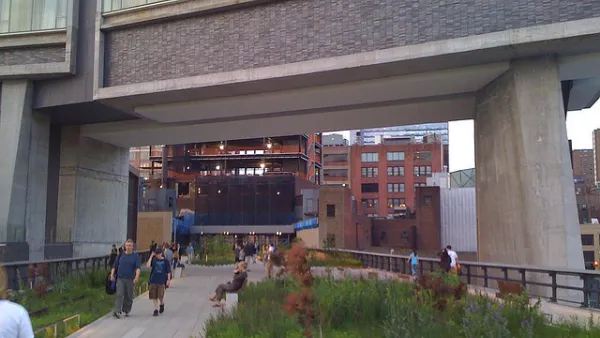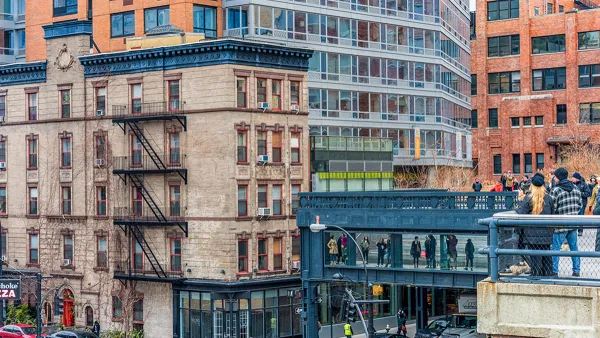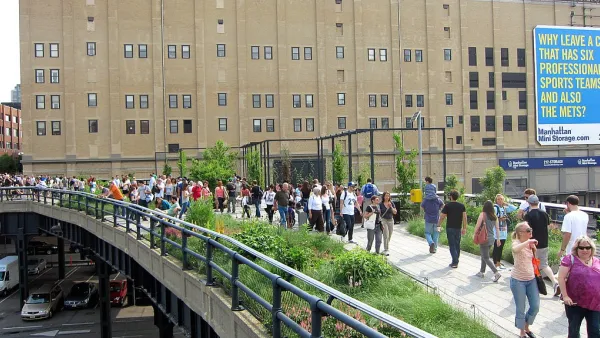The New York Times published four letters in response to an earlier op-ed from the self-described, “bitterly nostalgic” blogger, Jeremiah Moss, who blasted the popularity of the High Line, including one letter from the High Line founders.
Moss' op-ed, covered here: "The Downside of the High Line", blames the High Line's popularity for the gentrification of the West Chelsea district.
Park founders Joshua David and Robert Hammond write, "The High Line stands today thanks to a broad community of New Yorkers who rallied together to transform it from a derelict elevated railway into a beloved public space, free and open to all.
More than a decade ago, we founded Friends of the High Line with the goal of creating a great community amenity and an extraordinary public space. Our goal remains the same today."
Karen Bassler writes, "The garages and auto-part shops that Mr. Moss misses are part of an older way of living in the city, one that contributed to quality-of-life detractors: honking horns, idling engines, blaring car alarms and smog.
The High Line is a terrific example of changing the old (railways) into the new (parks) in a way that adds amenities to the lives of people living around them."
Andre Lund writes, "Sharing the treasures of the city with visitors is an undeniable fact of life for those of us who call Manhattan home. Like so many other "must sees" in the city, New Yorkers should view the High Line with pride, eager to show it off, not require a local driver's license to enter."
Joan Garvin, "a 30-year resident of Chelsea", writes, "I'm thankful to have this exquisite garden and community space steps from my front door. It's important to remember that the park preserves a decades-old railway that would have otherwise been torn down. (Indeed, segments of the original railroad tracks, last used in 1980, can be seen amongst the wildflowers growing through the old ties.) Thanks to neighborhood residents, this piece of the city's heritage was not only saved but also enhanced for all to enjoy."
Moss' controversial essay and the subsequent letters it generated, may ironically serve to lure more visitors to this Manhattan attraction, no doubt causing Moss more consternation; but it may, to his satisfaction, also increase the readership of his blog, Jeremiah's Vanishing New York.
FULL STORY: LETTERS: A High Line That’s Good for New York

Analysis: Cybertruck Fatality Rate Far Exceeds That of Ford Pinto
The Tesla Cybertruck was recalled seven times last year.

National Parks Layoffs Will Cause Communities to Lose Billions
Thousands of essential park workers were laid off this week, just before the busy spring break season.

Retro-silient?: America’s First “Eco-burb,” The Woodlands Turns 50
A master-planned community north of Houston offers lessons on green infrastructure and resilient design, but falls short of its founder’s lofty affordability and walkability goals.

Test News Post 1
This is a summary

Analysis: Cybertruck Fatality Rate Far Exceeds That of Ford Pinto
The Tesla Cybertruck was recalled seven times last year.

Test News Headline 46
Test for the image on the front page.
Urban Design for Planners 1: Software Tools
This six-course series explores essential urban design concepts using open source software and equips planners with the tools they need to participate fully in the urban design process.
Planning for Universal Design
Learn the tools for implementing Universal Design in planning regulations.
EMC Planning Group, Inc.
Planetizen
Planetizen
Mpact (formerly Rail~Volution)
Great Falls Development Authority, Inc.
HUDs Office of Policy Development and Research
NYU Wagner Graduate School of Public Service




























